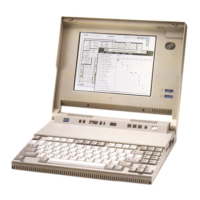You may
find
it
convenient
to
make
the
mechanical
tab
settings
coincide
with
the
logical
tab
settings.
Details
for
doing
this
are
given
in
the
section
describing
EDIT
(TABSET)
in
the
Command
Language
Refer·e·nce
manual.
If
you
do
not
use
the
TABSET
subcommand,
the
default
tab
settings
used
by
the
system
vary
with
the
data
set
type.
The
defaults
are
shown
in
Figure
4.
r-----------------------T--------------------------------------,
IDescriptive
Qualifier
I
Default
Tab
setting
Columns I
.-----------------------+--------------------------------------~
ASM
I
10,16,31,72
I
BASIC
I
10,20,30,40,50,60
I
CLIST I
10,20,30.,40,50,60
I
CNTL
I
10.,20,30,40,50,60
I
COBOL
I
8,12,72.
I
DATA
I
10,
20,
30,
40
,
50
,60
I
FORT
I
7,72
I
IPLI
I
5,10,15,20,25,30,35,40,45,50
I
PLI
I
5,10,15,20~25,30,35,40.45,50
I
TEXT
I
5,10,15,20,30,40
I
user
defined
qualifierl
10,20,30,40,50,60
I
_______________________
~
______________________________________
J
Figure
4.
Default
Tab
settings
If
you
want
to
change
the
default
settings
or
other
settings
you
previously
established,
or
nullify
all
tabs,
you
must
use
the
TABSET
subcommand.
If
you
want
to
change
the
default
settings,
you
will
probably
do
so
before·
you
create
the
data
set.
That
means
you
must
request
edit
mode
after
you
enter
the
EDIT
command.,
then
enter
the
TABSET
subcommand
and
return
to
the
input
mode
to
create
the
data
set.
For
example,
if
you
want
to
create
a
TEXT
data
set
with
the
logical
tabs
at
columns
10,
25,
and
35,
you
can
use
the
following
sequence:
READY
edit
series
new
text
INPUT
00010·
(null
line)
EDIT
tabset
10
25
35
(null
line)
INPUT
00010
36
TSO
Terminal
User's
Guide
(Release
21)

